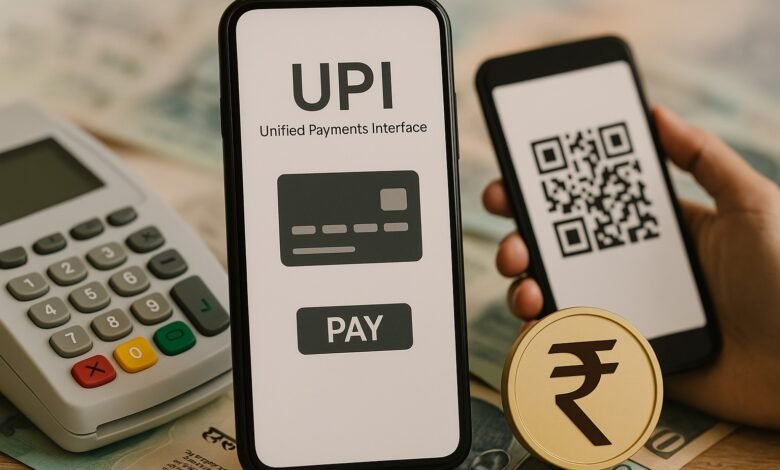Why the Indian Payment System Is a Global Fintech Success Story

Introduction: From Cash to Code — The Rise of the Indian Payment System
The 印度支付系统 has redefined the world’s understanding of digital finance. In a country once dominated by cash and manual transactions, India now stands as a global powerhouse of digital payments. Through a blend of innovation, regulation, and inclusion, the Indian Payment System has created one of the most efficient, secure, and inclusive digital ecosystems in the world.
Over the past decade, India’s transformation has been nothing short of revolutionary. What began as a government initiative to modernize financial systems has evolved into a fintech marvel — processing over 10 billion digital transactions every month. Today, the Indian Payment System is not just a domestic success; it’s an international benchmark.
This article explores how India built this ecosystem, what drives its success, and why other nations are now studying and replicating the Indian Payment System model.
The Birth of a Digital Vision
To understand the Indian Payment System, one must revisit its origins. Before 2010, India’s economy was primarily cash-based. Even in urban centers, electronic payments were rare, and digital transactions were considered inconvenient or unsafe.
In 2008, the National Payments Corporation of India (NPCI) was founded under the guidance of the Reserve Bank of India (RBI) to modernize the country’s fragmented payments network. The objective was simple but ambitious: create a national-scale, real-time, secure digital payment infrastructure accessible to everyone.
The Milestones That Shaped the Indian Payment System
- 2008: Establishment of NPCI — the foundation of digital transformation.
- 2010: Launch of IMPS (Immediate Payment Service) enabling real-time interbank transfers.
- 2016: Launch of UPI (Unified Payments Interface) — India’s defining moment in digital payments.
- 2020-2025: Massive UPI growth, international collaborations, and the introduction of Digital Rupee (CBDC) pilots.
The Indian Payment System thus grew not through luck but through deliberate vision — connecting banks, fintechs, consumers, and regulators in one interoperable ecosystem.
The Technological Framework of the Indian Payment System
At the heart of this revolution lies the technological architecture that powers the Indian Payment System. It’s a layered structure combining government-led infrastructure, open APIs, and advanced security protocols.
Core Components:
- Application Layer: Payment apps such as Paytm, PhonePe, Google Pay, Amazon Pay, and BHIM.
- Interface Layer: UPI standard APIs developed by NPCI.
- Processing Layer: The NPCI’s centralized switching and routing system.
- Banking Layer: The core banking systems of India’s 200-plus partner banks.
Key Technical Advantages:
- 24/7 Real-Time Payments: No settlement delay.
- Low-Cost Operation: Minimal transaction fees for merchants.
- Interoperability: Any app can send or receive from any bank.
- Open APIs: Encourages fintech innovation without proprietary lock-in.
- High Security: Device binding, PIN authentication, and real-time fraud detection.
Together, these innovations make the Indian Payment System not just a payments network but a robust digital infrastructure supporting millions of businesses.
UPI — The Game Changer of Indian Payment System
When UPI (Unified Payments Interface) launched in 2016, few predicted how profoundly it would change India’s economic behavior.
UPI unified bank accounts across platforms, allowing users to send and receive money instantly using just a mobile number or virtual ID. The process was simple, fast, and free — exactly what India’s vast population needed.
Why UPI Works So Well
- Instantaneous Transfers: No waiting, no batch settlement.
- Cross-Platform Compatibility: Works across all banks and wallets.
- QR Code Ecosystem: Every street vendor can now accept digital payments.
- Zero Merchant Fees: Encourages micro and small business participation.
- Offline Access: UPI Lite and UPI 123Pay bring digital payments to feature phones.
Today, UPI dominates the Indian Payment System, handling nearly 80% of all digital transactions in the country. Its open-source model has inspired systems in Singapore, UAE, France, and beyond.
Government and Regulatory Leadership
A critical reason the Indian Payment System succeeded where others stalled is government alignment.
The Reserve Bank of India (RBI) and Ministry of Electronics and Information Technology (MeitY) ensured that innovation never compromised security. Instead of competing with fintechs, regulators collaborated with them — fostering trust and speed.
Regulatory Pillars of the Indian Payment System
- Payment and Settlement Systems Act (2007): Legal foundation for payment regulation.
- Licensing Framework: For Payment Banks, Aggregators, and Wallets.
- Data Localization Policy: Requires all transaction data to remain within India.
- KYC & AML Enforcement: Ensures consumer protection and anti-fraud control.
- RBI Ombudsman Mechanism: Quick dispute resolution for consumers.
By maintaining transparency and reliability, the Indian Payment System earned global credibility and user confidence.
Financial Inclusion and the Aadhaar Advantage
The Indian Payment System’s inclusivity is its proudest achievement. Rural populations, once excluded from formal banking, are now digitally connected.
The Aadhaar biometric identity system, coupled with Jan Dhan Yojana, allowed over 400 million unbanked Indians to open accounts and access digital services. These accounts link directly to mobile wallets and UPI, enabling even low-income households to transact online.
Aadhaar-Enabled Payment System (AePS)
This system allows users to make withdrawals, deposits, and transfers using fingerprints at micro-ATMs — no smartphone needed. It turned local shopkeepers into mini-bank branches, making financial inclusion tangible.
The Indian Payment System thus bridges the digital divide, making payments universal — not a privilege.
Wallets and Payment Gateways: The Digital Middle Layer
Before UPI, wallets like Paytm, Mobikwik, and FreeCharge pioneered cashless payments. Post-UPI, they evolved into super-apps integrating bill payments, loans, and insurance.
Leading Wallet Ecosystem in the Indian Payment System
| Wallet | Users | Distinct Advantage |
| Paytm | 450 M+ | Financial super-app with integrated banking |
| PhonePe | 400 M+ | UPI market leader with Flipkart support |
| Google Pay | 150 M+ | AI-driven user experience |
| Amazon Pay | 80 M+ | E-commerce-integrated wallet |
Meanwhile, payment gateways such as Razorpay, Cashfree, CCAvenue, and PayU empower businesses to integrate the Indian Payment System directly into their websites and apps — enabling online sales, recurring billing, and API-based settlements.
The Role of Traditional Banks in Digital Transformation
Rather than resisting disruption, Indian banks embraced the Indian Payment System and digitized aggressively.
- SBI YONO: A super-app integrating banking, loans, and shopping.
- HDFC Bank PayZapp: Combines card, wallet, and UPI payments.
- ICICI Bank iMobile: Offers digital onboarding and instant credit.
- Axis Bank Lime: India’s early open-banking experiment.
This cooperation between banks and fintechs created a powerful hybrid ecosystem — leveraging both regulatory trust and modern user experience.
Security and Risk Management
With billions of daily transactions, safety is paramount. The Indian Payment System incorporates multi-layered security controls:
- Two-Factor Authentication: Mobile verification and UPI PIN.
- Device Binding: Locks each account to a verified smartphone.
- AI-Driven Fraud Detection: Constant monitoring of transaction anomalies.
- End-to-End Encryption: Data is secure throughout the transaction cycle.
- Consumer Protection Laws: RBI mandates rapid redressal for disputed payments.
These measures give users confidence that digital equals safe — a mindset crucial for adoption.
Small Merchants and the QR Revolution
One of the most visible symbols of the Indian Payment System is the QR sticker on every tea stall, taxi, and small shop.
QR codes democratized acceptance. Merchants no longer needed POS machines; they simply printed a QR code linked to their bank. Payments are instant, confirmed, and traceable.
This QR revolution brought over 30 million small merchants into the digital economy, making India the world’s largest retail digital-payments market by volume.
The Pandemic Boost and Behavioral Shift
COVID-19 accelerated adoption of the Indian Payment System. Contactless payments became essential. Within months, digital transactions doubled. Even elderly users learned UPI transfers, and small businesses adopted online invoicing and digital accounting.
Behavioral change cemented a permanent shift — convenience, hygiene, and transparency turned into habit.
Economic Impact of the Indian Payment System
The economic ripple effect of the Indian Payment System is enormous:
- GDP Contribution: Digital payments now drive over 15% of India’s GDP activity.
- E-commerce Growth: Online retail crossed $100 billion powered by seamless payments.
- Employment: Millions of fintech jobs in technology, compliance, and analytics.
- Tax Efficiency: Cashless transactions reduce leakage and improve revenue collection.
- Financial Data Analytics: Transaction insights empower smarter credit scoring and lending.
The Indian Payment System has thus become a growth engine — not just a utility.
Global Recognition and Cross-Border Expansion
India’s digital-payment model has earned global acclaim. The IMF and World Bank cite it as an example of scalable innovation.
Global Collaborations
- India–Singapore UPI Link: Enables instant cross-border payments.
- UAE and France Pilots: Testing acceptance of Indian UPI QR codes.
- Nepal and Bhutan Integration: Extends the Indian Payment System regionally.
International observers now recognize UPI’s open-architecture approach as a model for inclusive fintech ecosystems.
Industry-Specific Applications
E-commerce:
UPI and wallets have simplified checkout, improving conversion rates. Refunds, EMI options, and one-click payments enhance customer trust.
Gaming and Entertainment:
Small, recurring micro-transactions (₹10 – ₹100) thrive on instant, low-cost payments.
Transport and Utilities:
Metro tickets, tolls, and utility bills integrate with the Indian Payment System, promoting convenience.
Healthcare and Education:
Hospitals and universities use UPI QR codes and gateways for fee collection, eliminating delays.
Each sector benefits uniquely from the adaptability of the Indian Payment System.
Emerging Technologies Shaping the Future
The next evolution of the Indian Payment System leverages advanced technologies:
- Artificial Intelligence: Predictive analytics and personalized financial advice.
- Blockchain: Transparent and tamper-proof cross-border settlements.
- Internet of Things (IoT): Smart devices initiating autonomous payments.
- 5G Connectivity: Instant data exchange for latency-free transactions.
- Central Bank Digital Currency (CBDC): RBI’s e-Rupee integrating with existing UPI rails.
By integrating these, India aims to maintain leadership in fintech innovation through 2030 and beyond.
Challenges and the Road Ahead
Despite success, the Indian Payment System faces challenges:
- Cybersecurity threats require constant vigilance.
- Rural infrastructure still needs strengthening for consistent connectivity.
- Inter-bank interoperability and scalability must evolve with transaction volume.
- Sustainability of zero-cost model: Balancing innovation and profitability.
Government and private stakeholders continue investing in security, cloud capacity, and education to address these.
Global Lessons from the Indian Payment System
Countries studying the Indian Payment System can extract several principles:
- Open Infrastructure > Proprietary Control — openness fosters innovation.
- Inclusive Design — serve the unbanked first, profit later.
- Public–Private Collaboration — regulators and startups must align.
- Digital ID Integration — verified identity simplifies KYC.
- Cost-Free Transactions — remove friction to drive usage.
This replicable framework is why India’s model inspires systems in Africa, Southeast Asia, and Latin America.
Statistical Overview — Measuring the Success
| Metric | 2016 | 2020 | 2025 (Projected) |
| UPI Transactions (Monthly) | 2 M | 1 B | 15 B+ |
| Digital Wallet Users | 40 M | 300 M | 600 M |
| Cash Usage in Retail (% of Transactions) | 90% | 55% | 30% |
| Payment System Penetration | 5% | 45% | 80%+ |
| GDP Impact (%) | 2% | 10% | 15%+ |
Such rapid progress validates the Indian Payment System as a catalyst of socioeconomic transformation.
The Human Element — Building Trust in Technology
At its core, the success of the Indian Payment System lies in trust. The system earned it through transparency, simplicity, and consistency.
Millions of first-time digital users were guided through awareness campaigns, multilingual apps, and customer-care channels. As confidence grew, users shifted permanently from cash to digital, proving that inclusion and education can drive national transformation.
Case Studies: Real-World Impact
Small Retailer in Jaipur:
A tea-stall owner using UPI QRs reported 30% revenue increase as customers preferred cashless payments.
Rural Teacher in Assam:
Receives salary directly via UPI, no longer travels to district bank offices.
Startup in Bengaluru:
Integrated Razorpay API for instant settlement, cutting payment delays by 90%.
These examples demonstrate the Indian Payment System’s deep impact across economic layers.
Conclusion: India’s Blueprint for the World
The 印度支付系统 is no longer just India’s story — it’s a case study for the world. By balancing innovation with regulation, inclusivity with technology, and scale with simplicity, India achieved what few nations could.
From bustling cities to remote villages, digital payments are now part of daily life. Each QR code, each UPI transfer, each wallet transaction is a symbol of national progress.
As India steps into the next decade of fintech leadership, its payment system remains a guiding light — proving that with vision, infrastructure, and collaboration, even the largest economies can go truly digital.





